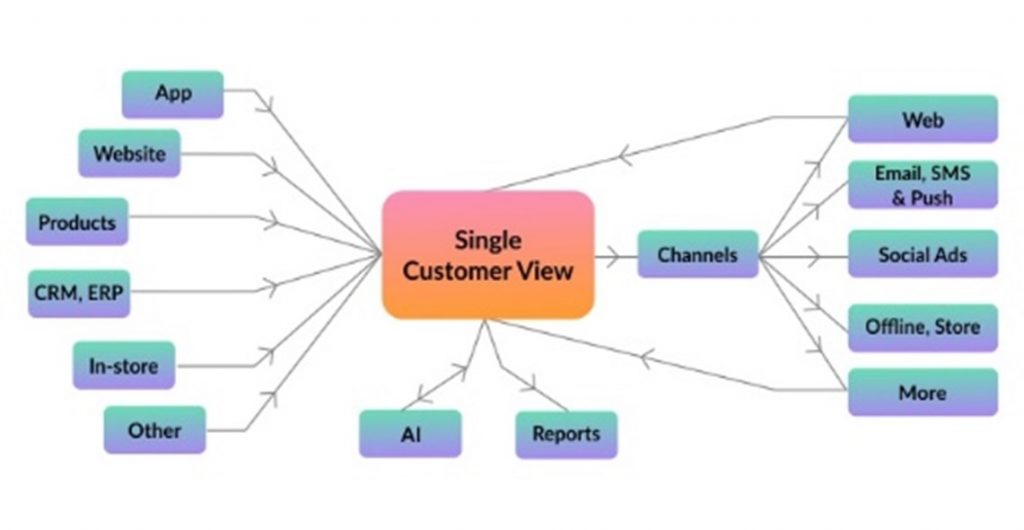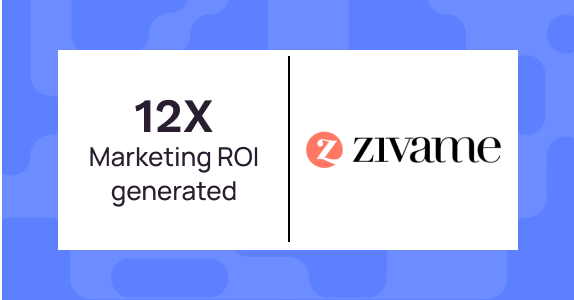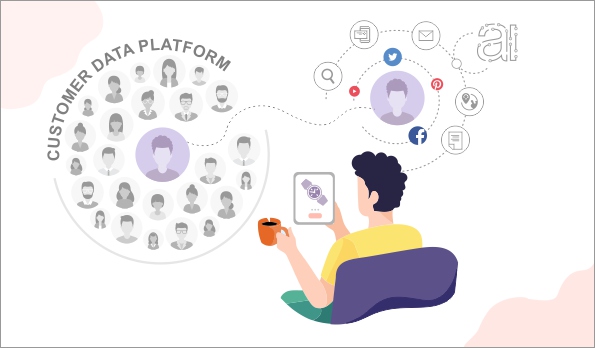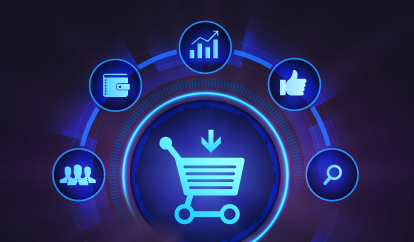If you are a data-driven marketer (which you should be) then you’ve landed just at the right page. With improving AI & ML technology, it has become a lot easier for marketers to gather information on their customers from several sources and use it to reach out to their customers.
The power of AI has given the world of marketing yet another promising technology, The Customer Data Platform.
What is a Customer Data Platform?
Looking for that one perfect dress for some occasion I must have visited a number e-commerce websites, social media sites, physical stores and all other possible places. And this is how the shopping pattern is for most of the customers. They will be hopping from a brand’s e-commerce site, social media page, mobile app and the store itself. The question is how can brands keep up with these multiple customer touch-points?

This is where CDP comes into the picture. The CDP integrates data from across all these touch-points to create a unified profile of all your customers, their attributes and all the information they leave behind every time they interact with your brand (online or offline). It builds the customer’s profile on an individual level.
So, all in all, the data you have on your customers be it transactional, behavioral, demographic from multiple sources is linked to the customer associated with all of this.
Why Should You Use a CDP?
The need for a Customer Data Platform arises because of the sheer volume of customer data coming in from multiple sources and channels that marketers have to deal with. I agree that managing data is not a new thing, but the number of software’s that are available to do so can truly be overwhelming.
The marketing world is a complex place and the expectations of customers are very high. Here’s where the existing systems fail to utilize AI to its full potential.
- Lack the ability to incorporate semi-structured and unstructured data sources that frequently introduce new customer attributes and behaviours.
- CRM, marketing automation, and marketing clouds are all specialized systems built to interact directly with customers and prospects. As such, they work primarily with data they generate internally. This data is important but not complete, since other useful data is collected in other systems such as Web site management, order processing, and customer support. Most CRM, marketing automation, and marketing cloud systems lack features to ingest this external data, perform sophisticated identity matching, or easily share unified profiles with other systems.
- They lack the precision needed to offer the right product to the right individual at the right moment. Some of the systems like DMP almost never store personal identifiers such as names and addresses to ensure they don’t violate privacy rules. This limits their ability to do data unification and support marketing processes they rely on personally identifiable information.
- Data integration platforms, such as Mulesoft, Informatica, or Boomi, move data between systems but don’t perform extensive processing or store data internally. This means they cannot assemble the historical data sets required for AI training or to execute AI-based models.
Here’s how the Customer Data Platform fills the gap that exists in the current solutions:
Unlike other systems that work with customer data, CDPs were designed specifically to assemble and share unified customer profiles. This means they have the data ingestion, identity matching, profile creation, and access features needed to do this efficiently. Specific advantages of CDPs include:

- Universal data ingestion. The CDP can ingest any data type and store the original detail, similar to a data lake. This is achieved by using multiple data stores including relational databases for structured inputs and NoSQL databases for unstructured and semi-structured inputs.
- Flexible data models. The CDP can convert the input data into usable formats, applying data quality, standardization, identity matching, and reformatting tools as needed. It includes or integrates with specialized tools to extract structured information from unstructured and semi-structured inputs, making data from those inputs available for analytics and personalization.
- Open data access. The CDP makes its profiles available to other systems, typically through an open API that lets those systems request CDP information. Other options may include file exports, segment selection, and database queries.
- Privacy and security. CDPs include features to ensure that sensitive customer data is used in compliance with privacy rules and security controls. This may include policies that apply different constraints based on where a customer lives, features to gather and manage data usage permissions, and features to respond to data access and deletion requests. Security features include access controls, usage logs, encryption, and anonymization. CDPs that lack these abilities often have prebuilt integrations with specialized systems that provide them.
- Real-time and nearly real-time execution. Optimal customer experience often requires making decisions based on current data. During a real-time interaction such as a Web site visit, this requires both capturing behaviors during the interaction and instantaneously looking up the customer history to help select the most appropriate response. There’s often a need to share information across channels in real-time, such as adding information about recent Web interactions to the customer profile so it is available to call center agents and chatbots.
- Prebuilt process flows. CDPs are provided with standard process flows for common activities such as data capture, transformations, identity management, data modeling, profile creation, and output preparation. This makes deployment much faster than constructing such processes from scratch, even when suitable tools are available to do the work. Prebuilt CDP processes reflect the best practices developed through CDP vendors’ previous experience, further reducing the time to deliver a well-functioning solution.
This sums up the specific reasons why CDP is coming up as a preferred platform for being more than a simple data gathering and managing platform. This platform makes it easy for the marketers to access a single, 360 degree view of a customer in real time. For marketers, this a real bonus that saves up hours and hours of their time that goes into managing data. It’s an easy and rewarding way out for marketers to unify data, decision and delivery systems to stay engaged with their customers, in real time and across every stage of customer journey.
To know more about what CDP can do for you, Schedule a Demo with us!











